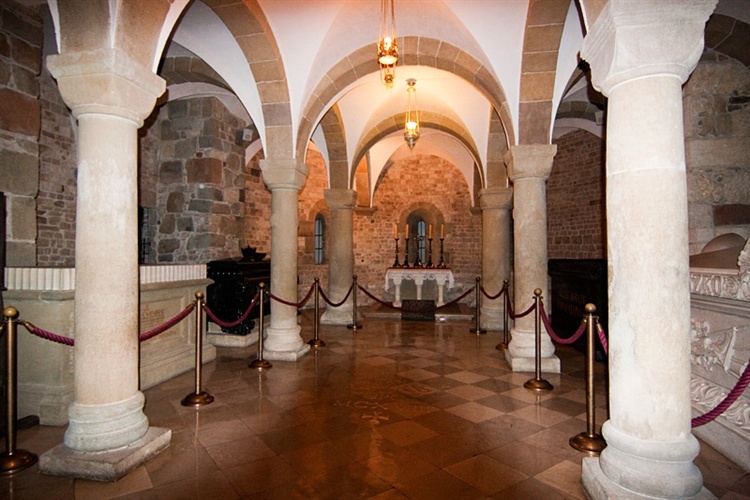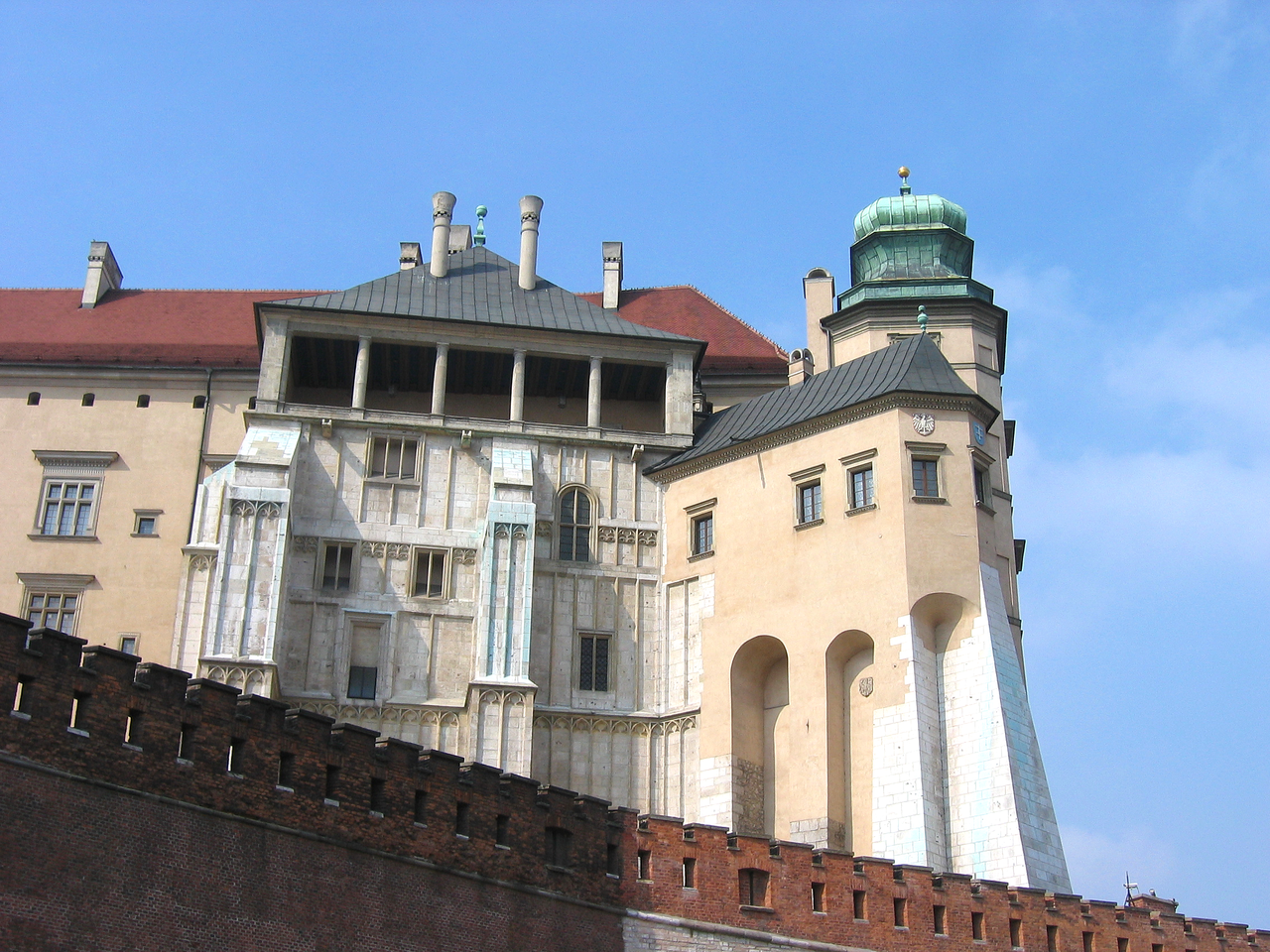 Zamek – Wawel – Komnaty królewskie – Arrasy
Zamek – Wawel – Komnaty królewskie – Arrasy
Arrasy, wielki wawelski skarb, należą do najcenniejszych dzieł tego typu na świecie. Są to dekoracyjne tkaniny, których pierwszymi wytwórcami byli XIV- i XV-wieczni tkacze z francuskiego miasta Arras. Polska po raz pierwszy ujrzała arrasy przy okazji rozpakowywania weselnego wiana królowej Bony. Jej małżonek, Zygmunt Stary, zamówił ponadto większą partię w Antwerpii, co łącznie dało sto osiem tkanin. Zygmunt August wzbogacił rodzinną kolekcję z królewskim rozmachem. Sprowadził bowiem z Brukseli arrasy (utkane z wełny, jedwabiu oraz srebrnych i złotych nici metalowych) wykonane na jego specjalnie zlecenie zawierające szczegółowe wytyczne co do tematyki, rozmiarów i kształtów, tak aby pasowały do wawelskich komnat. Najwybitniejszym spośród zastępu artystów niderlandzkich, trudzących się nad realizacją zamówienia, był Michiel van Coxcie. Kolekcja osiągnęła liczbę trzystu sześćdziesięciu sztuk. Pod względem treści arrasy podzielono na trzy grupy: biblijne, przedstawiające zwierzęta (strusie, tygrysy, ptaki, zające) i krajobrazy oraz heraldyczne. Do dziś spośród tych wyjątkowych dzieł sztuki przetrwały tylko 143. Od XVII w. losy kolekcji były burzliwe i dramatyczne. Po śmierci ostatniego z Jagiellonów przeszła na własność państwa. Kiedy Jan Kazimierz zamierzał abdykować, wywiózł część arrasów do Francji, część zaś oddał w zastaw gdańskiemu kupcowi. Tym niegodnym posunięciem chciał wymusić na sejmie polskim dożywotnią pensję. Z gdańskiego zastawu arrasy zostały wykupione przez sejm dopiero w XVIII w., ale już w 1795 r. wywieźli je Rosjanie i umieścili w Petersburgu. Wisiały tam do lat 20. XX wieku i dopiero na mocy traktatu ryskiego powróciły na Wawel. W ucieczce przed Niemcami przemierzyły Rumunię, Francję, Anglię i Kanadę. W 1961 r. ostatecznie powróciły na Wawel.
Sala Poselska, zwana także Tronową lub Pod Głowami, należy do największych komnat zamku. W górnej partii ścian zdobi ją fryz ilustrujący historię życia ludzkiego od urodzin po śmierć. Natchnieniem dla autora było dzieło greckiego stoika Simonidasa pt. Tabula Cebetis. Ściany pokrywają arrasy wyobrażające zwierzęta na tle krajobrazu (werdiury) oraz arras z orłem jagiellońskim. W miejscu, gdzie stoi XVI-wieczne krzesło, stał niegdyś tron królewski. Słynnym elementem wystroju komnaty są głowy wawelskie umieszczone w kasetonach stropu.







